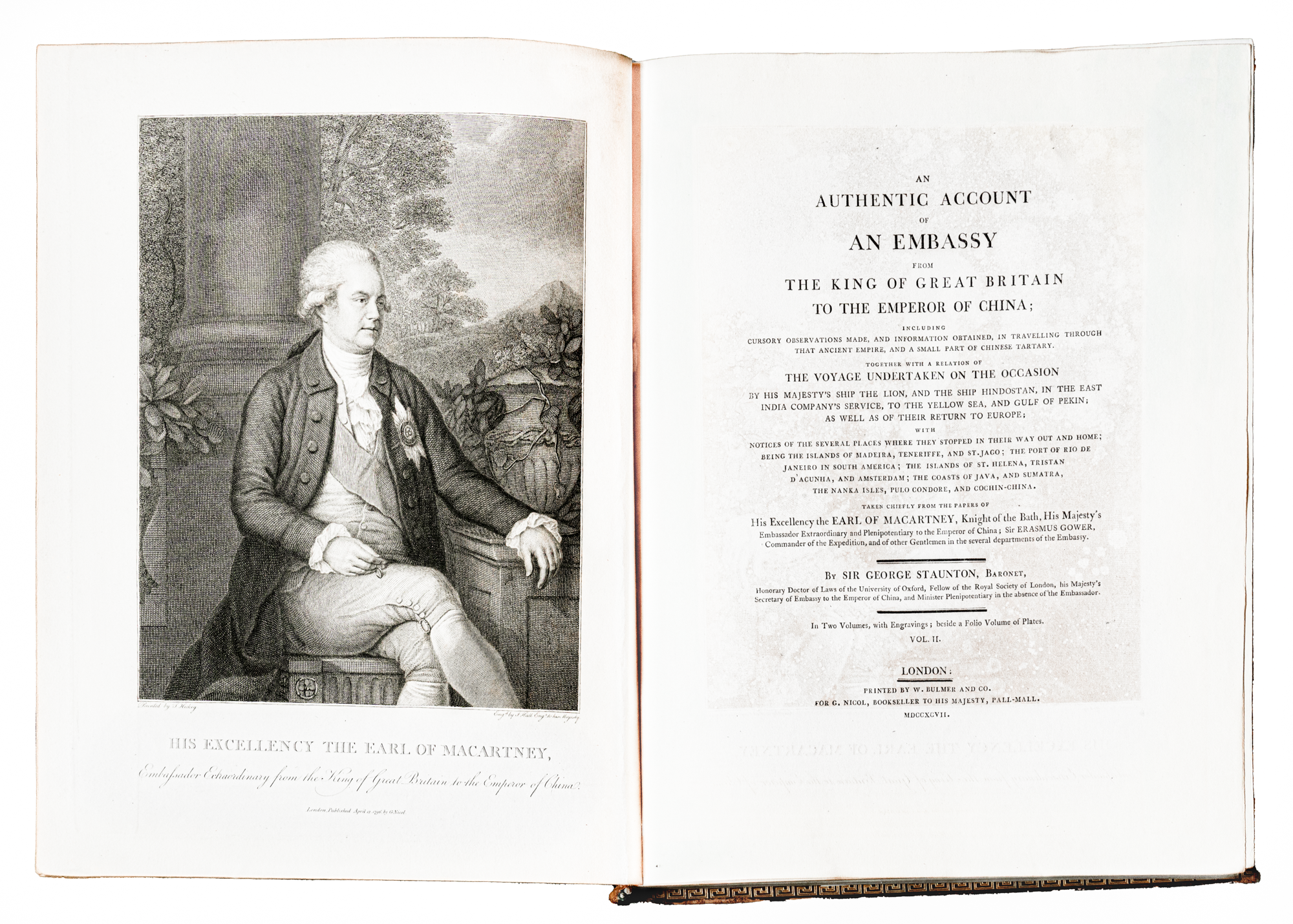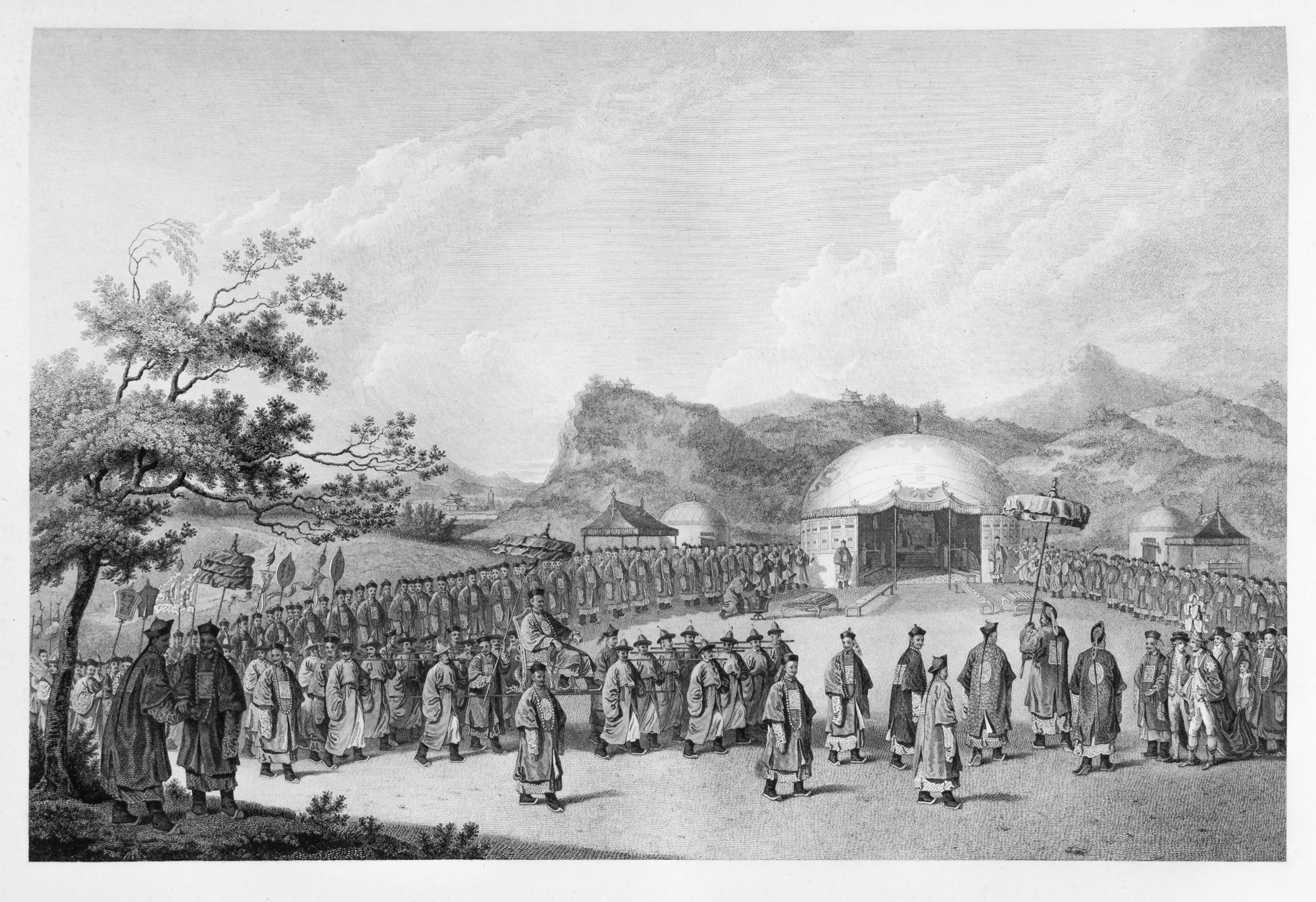
Earl Macartney’s Embassy to the Qianlong Emperor of China. An Authentic Account of an Embassy from the King of Great Britain to the Emperor of China. by Sir George Leonard Staunton, Earl George Macartney and Erasmus Gower, London 1793. This rare publication describes the first diplomatic mission by the British to China.


Macartney’s Embassy from George III, King of Great Britain to the Qianlong Emperor of China in 1793 was the first British diplomatic mission to China. He requested numerous concessions, all of which were refused. Nonetheless, the mission gathered much new information about China and raised China's profile in Britain and Europe. This is the rare large-format three-volume edition, including numerous quality engravings and maps.
The 28 engravings in volume 3 were made by painter William Alexander, based on his own first-hand observations during the mission, and sketches made by Lieutenant Henry William Parish. The atlas' plates [in volume 3] were selected and arranged by the English botanist Joseph Banks who did not accompany the embassy.
Volumes 1 & 2: rgsp 915.1 S798c York Gate, in tall glass bookcase
Volume 3: rgsp 910.41 V223d York Gate, in D cabinets ( Plates to Vancouver's Voyage to North Pacific Ocean and to Lord Macartney's embassy to China, William Alexander, George Vancouver, George Staunton, London: W. Bulmer, 1997)
William Alexander was an English draftsman and water colorist. From 1792 to 1794 he accompanied Lord George Macartney’s official embassy on behalf of the British government to Beijing, where he documented the visit and made drawings of the Chinese court. He later served as curator of drawings and prints at the British Museum. - The prints were engraved after William Alexander by various engravers: Wilson Lowry engraved the view of the Palace of Yuen-Min-Yuen, James Heath the scene from a Chinese play, and J. Pass the picture of the military post.
He assiduously applied himself to the mastery of his profession, obtaining the notice and approbation of Sir Joshua Reynolds.
In 1802, Alexander was appointed professor of drawing at the Military College at Great Marlow, resigning in May 1808 to take up the post of assistant keeper of antiquities in the British Museum. In the years 1810, 1812, and 1815, he made drawings of the terra cottas and marbles in the Museum which were engraved and published in three volumes
© The Royal Geographical Society of South Australia